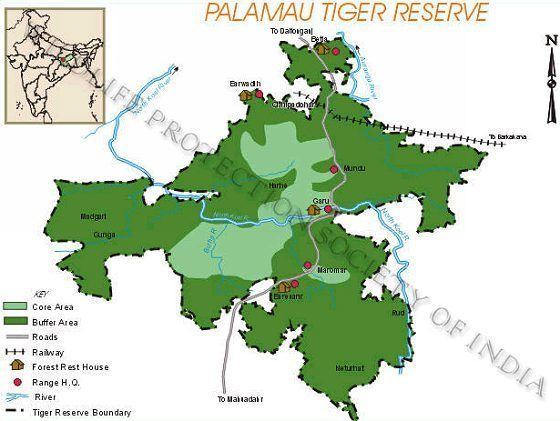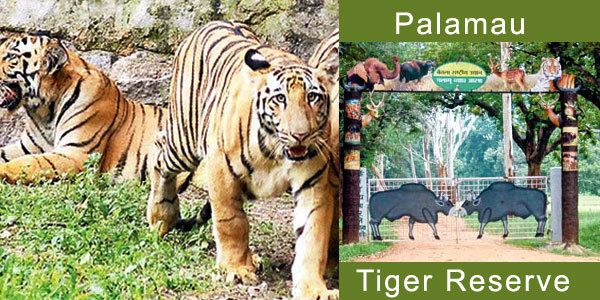Area 1,026 km² Established November 1974 | ||
 | ||
Palamau tiger reserve palamu district jharkhand india
The Palamau Tiger Reserve is one of the nine original tiger reserves in India and the only one in the state of Jharkhand, India. It forms part of Betla National Park and Palamau Wildlife Sanctuary.
Contents
- Palamau tiger reserve palamu district jharkhand india
- Palamau tiger reserve
- FormationEdit
- AreaEdit
- WildlifeEdit
- IssuesEdit
- References

Palamau tiger reserve
FormationEdit

The area in Latehar District in Jharkhand was set aside as protected in 1974 under the Indian Forests Act. Before the formation of the reserve, the area was used for cattle grazing and camping; it was acutely prone to forest fire. In 1974, the area was set up as the Palamau Tiger Reserve.
AreaEdit

The tiger reserve has a total area of 1,129.93 square kilometres (436 sq mi) with a core area of 414.93 km2 and a buffer area of 650 km2.
Ramandag, Latoo and Kujurum forest villages are in the core area. Most of the villages are small; one village, Meral, consisted in 1993 of just 99 acres (400,000 m2) of land, 9 families and 78 people. In 1993 there were 45 villages in the buffer area and about 60 more in the periphery of the reserve.

As of 2012, that number had grown to 136 villages that fall under the "buffer area" regulations of the Palamau Tiger Reserve. Only seven of the villages were in existence in 1923. The villagers have no legal claim to lands that were settled after 1974 when the buffer area for the reserve was created.
WildlifeEdit

The tiger population is extremely scarce and counting them has become particularly difficult due to Naxalite activities that have increased since 1990. As of 2012, the count, using DNA to prevent over-counting, is one male and five female tigers.
The initial count in 1974 when the tiger reserve was created was 50 tigers, but some claim that this was an over-count without adequate controls. By 2005 the number of tigers was down to 38. The census in 2007 found only 17 tigers. The 2009 tiger census based on DNA analysis indicated that there were just six tigers in the reserve. The forest department claimed that, since the core area was almost inaccessible due to difficult terrain and the Naxalite presence, the census may not have found all the tigers. No new tigers have been found in the years since and decreased game and hunting opportunities suggest that these are the only six.
As of 1989, 65 elephants were believed to reside in the reserve.
Apart from tigers and elephants, leopards, gaurs, sambars and wild dogs live in the reserve. (For a more exhaustive list see article about Betla National Park.) Though the North Koel River runs through the reserve, the animals depend on man-made holes for water, making them easily accessible to humans.
Over 140 species of birds (including peafowl) have been sighted in the reserve.
Two white vultures were spotted by the officials of Palamau Tiger Reserve in Chainpur in 2013. They were seen on the sand bed of River North Koel, said sources. This is the first time in 10 years that a vulture has been sighted in Palamau.
